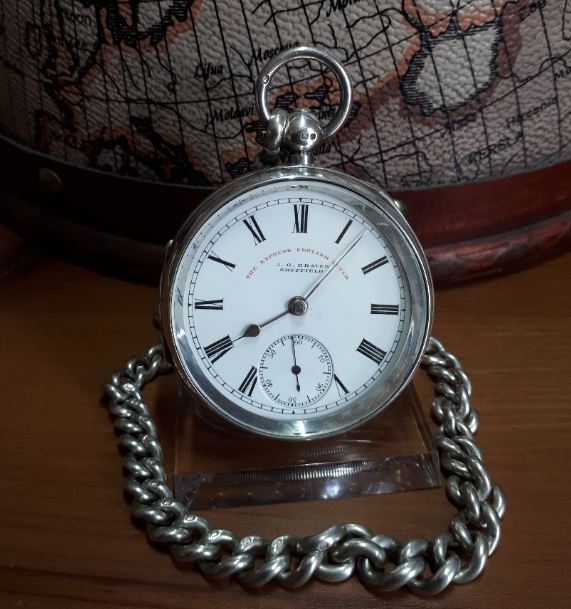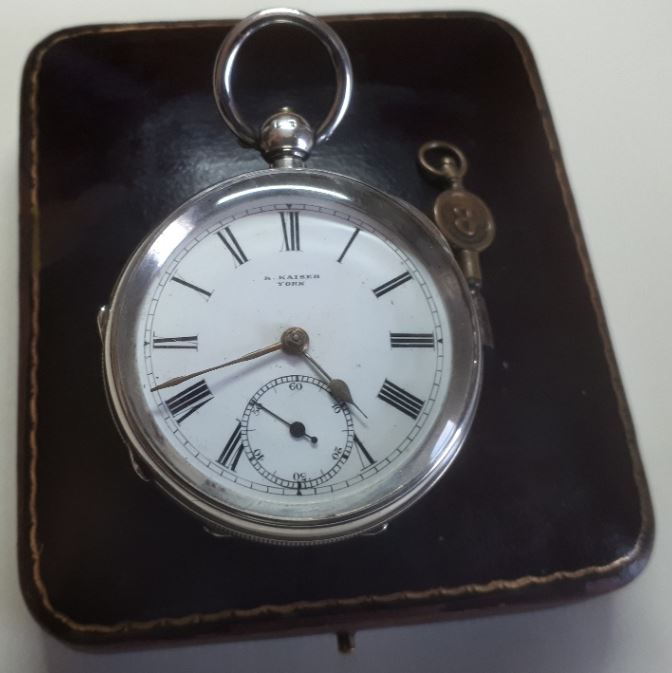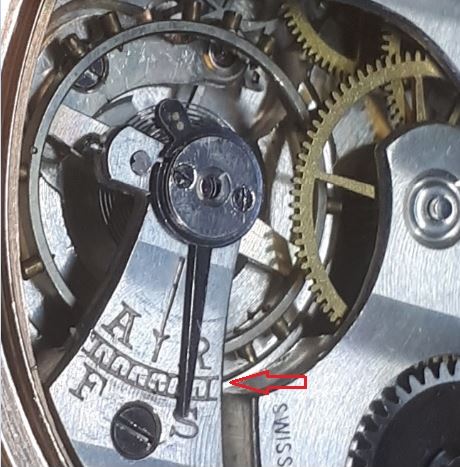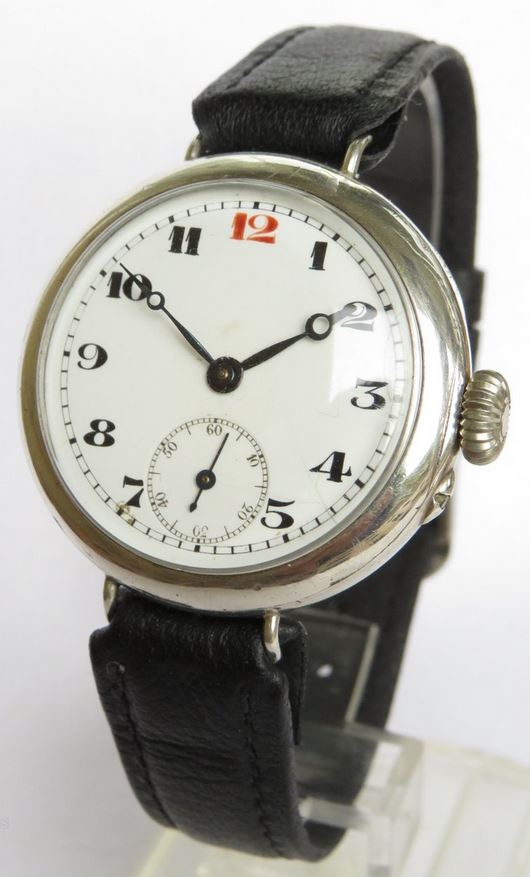Last updated on May 10, 2024
When it comes to an antique watch, accuracy is a very important factor. The watch might be extremely rare or beautiful, but if it doesn’t keep accurate time, it is basically useless as a practical timepiece. The accuracy of a watch is usually referred to as the daily rate. What exactly is the daily rate of a watch? In simple terms, it’s how fast or slow a watch runs in seconds per day.
The daily rate tends to be inversely proportional to the amplitude of the balance. The balance wheel swings clockwise and counter-clockwise. Each one of those swings, in either direction, is called a beat. The amplitude of a watch is the number of degrees of rotation of one beat. That means that a decline in amplitude will generally cause the daily rate to increase. This is because if the amplitude is low, the balance wheel doesn’t have to travel as far so it takes less time to complete a beat. This is why many antique watches tend to run fast. Dirt, worn components and dried lubrication can cause the amplitude to drop and the rate to increase.
Magnetism
Magnetism can have a similar effect on hairsprings. The coils of a magnetised hairspring will tend to stick together, effectively shortening the spring and therefore the amplitude. This will result in a watch that runs much too fast. However, if the magnetism is severe enough it could cause the hairspring to seize and the watch can stop working. In the modern world, magnetic fields are everywhere, generated by all electrical appliances. This can play havoc on an antique watch, fortunately, it can be easily degaussed.
Finally, the position of the watch also has some influence. In the horizontal positions, either dial-up or down, most of the downward pressure of the balance pinion is on the capstone. The friction is minimal so there is little effect on time-keeping. In the vertical positions, the friction is much greater because of the larger surface area contact with the balance staff and the jewel hole walls. A change from a horizontal position to a vertical position causes a swing in the amplitude which in turn causes a fluctuation in the rate. This is why many movements are adjusted to multiple positions, which means that the watch is adjusted for positional errors to ensure that the watch runs accurately in most positions.
What is considered acceptable?
There is no clear and definitive answer. It will depend on an individual’s requirements. Personally, I don’t collect antique watches as display pieces, I wear them regularly. For that reason, I need a watch that is reasonably accurate. A typical working day, pre-pandemic, might have seen me out of the house for 10 to 12 hours. A social event, like a wedding, could stretch to around the same period of time. Either way, so to be practical, I need a watch that is accurate to within at least 30 seconds over that period. This equates to an accuracy of +/- 1 minute per day. Ideally, the watch will also have a power reserve of at least 24+ hours.
If I really need the time to be more accurate, I have the smartphone in my pocket. I am fortunate that all of the watches in my collection are accurate within less than 60 seconds over a 24-hour period. Fortunately, I have purchased all of my antique watches from reputable dealers, so they have always kept good time. I know that some collectors will check the timekeeping within seconds. I am happy to cast a glance at the watch and see that it is within a minute or two of accuracy per day.
Typically, dealers will provide estimates on their websites for the accuracy of their watches. Generally, most dealers offer accuracy of 1-2 minutes for lever watches and 2-5 minutes for cylinder and verge watches. If you are going to purchase a practical watch, always ask the dealer what the daily rate is before you purchase the timepiece. Most dealers will also offer some sort of guarantee on their watches, typically 30 days from the date of purchase, but sometimes up to 12 months.
How do you regulate the rate?
The easiest way to alter the rate of an antique watch is with the regulator. The regulator is a moveable lever mounted on the balance cock or bridge. Two downward projecting pins, called curb pins, form a narrow slot on one end of the regulator. The end of the outer coil of the hairspring is fixed in a stud which is secured to the balance cock. The outer coil of the spring then passes through the regulator slot. The portion of the spring between the stud and the slot is held stationary. Therefore, the position of the slot controls the active length of the spring.
Moving the regulator slides the slot along the outer turn of the spring, changing its effective length. If you move the regulator towards the “slow” side, the curb pins will move towards the stud. This will increase the effective length of the hairspring and the watch will run slower. If you move the regulator towards the “fast side”, the effective length of the hairspring is shortened and the watch will run faster.
To regulate your antique watch, open the case back and look for the regulator lever. If your watch is running fast, you will need to move the regulator towards the S or R. If it is slow, move it toward the F or A. The regulator arm should be moved in small increments and the watch tested after each adjustment. It could take several days of trial and error before you manage to fine-tune the watch rate to an acceptable level.
Servicing
If you have fully extended the regulator arm in one direction and the watch is still not operating at a reasonable daily, servicing will be the only option. Dust and dried lubrication can build up over time and cause increased friction on the movement. Likewise, worn or damaged parts can also cause unwanted friction.
When a watch is serviced, it will be stripped down to its individual components. All of the components will be cleaned. The watchmaker will check the parts for any wear or tear and worn parts will be replaced. The movement will be lubricated with the correct oils and greases and then reassembled. The watch will be checked for magnetism and if needed, it will be degaussed. Finally, the watch will be wound for a timekeeping test, which could take anything from 24 hours to a week. Any necessary regulating will occur during the timekeeping test and the watch should be returned to the owner operating at an acceptable daily rate.
Related content
How accurate should a vintage watch be keeping time? at About Time Watches.




I have a Revue open-faced pocket watch that I inherited from my great-grandfather, it must date to just before the First World War. It is silver and in really nice condition, with only a few very minor marks on the case. It runs well and ticks loudly, much louder than my Fossil watch. I don’t ever want to sell it, so I won’t ask what you think it is worth. However, I have a receipt in the original box that suggests it might have last been serviced in 1957. It works and runs about 90 seconds fast over a day, on a full wind it lasts about 28 hours. Is that acceptable timekeeping and should I get it serviced? Thanks, Karoline
Hi Karoline, I have a Revue full hunter pocket watch in my collection which dates to c1910. It has a Revue 30 calibre movement which runs about 1 minute fast over 24 hours with a power reserve of around 32 hours. 90 seconds is certainly acceptable for an antique pocket watch. However, if it is a valuable family heirloom and hasn’t been serviced sine 1957, it is certainly time to do so now. The lubricants will have long since dried out and you could be causing damage to the movement when running the watch. If you want to know the value look for recently completed auction results for similar antique pocket watches of the same case material and movement. I must admit I also like the loud ticking of antique timepieces. You can quite often find me in my spare room listening to the chorus of half a dozen or so antique pocket watches ticking away. Thanks for taking the time to comment, Jason..
I have a family heirloom antique pocket watch. There is no name on the dial, I believe it dates to just before WW1. It runs about 45 seconds a day fast, which is very acceptable according to this post. Thanks for the information.